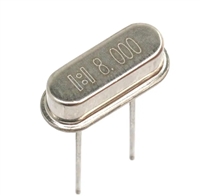1.0 Functional Description (Continued)
1.3 PRESCALERS
The complimentary fIN and fINB inputs drive a differential-pair amplifier which feeds to the respective prescaler. The Main PLL
complementary fIN1 and fIN1b inputs can be driven differentially, or the negative input can be AC coupled to ground through an
external capacitor for single ended configuration. The Auxiliary PLL has the complimentary input AC coupled to ground through
an internal 10 pF capacitor. The Auxilllary PLL complimentary input is not brought out to a pin, and is intended for single ended
configuration only. The LMX237X has a dual modulus prescaler with 2 selectable modulo. For PLL’s rated at 2.5 GHz or 2.0 GHz
a 32/33 or 16/17 prescaler is available. For PLL’s rated at 1.2 GHz a 16/17 or 8/9 can be chosen. Both Main and Auxiliary pres-
calers’ outputs drive the subsequent CMOS flip-flop chain comprising the programmable N feedback counters. The proper pres-
>
caler value must be chosen to in order not to exceed the maximum CMOS frequency. For fIN 1.2 GHz, the 32/33 prescaler must
>
<
be selected, similarly for fIN 550 MHz, the prescaler value must be at least 16/17, and for fIN 550 MHz, an 8/9 prescaler value
is allowable.
1.4 FEEDBACK DIVIDERS (N-COUNTERS)
The Main and Auxiliary N-counters are clocked by the output of Main and Aux prescalers respectively. The N-counter is composed
of a 13-bit integer divider and a 5-bit swallow counter. Selecting a 32/33 prescaler provides a minimum continuous divider range
from 992 to 262,143 while selecting a 16/17 or 8/9 prescaler value allows for continuous divider values between and 240 to
131,087 and 56 to 65,559 respectively.
1.5 PHASE/FREQUENCY DETECTORS
The phase/frequency detectors are driven from their respective N- and R-counter outputs. The maximum frequency at the phase
detector inputs is 10 MHz unless limited by the minimum continuous divide ratio of the dual-modulus prescaler. The phase de-
tector output controls the charge pump. The polarity of the pump-up or pump-down control is programmed using Main_PD_POL
or Aux_PD_POL, depending on whether Main or Auxiliary VCO characteristics is positive or negative. The phase detector also
receives a feedback signal from the charge pump in order to eliminate dead zone.
1.6 CHARGE PUMPS
The phase detector’s current source output pumps charge into an external loop filter, which then integrates into the VCO’s control
voltage. The charge pump steers the charge pump output CPo to VP (pump-up) or Ground (pump-down). When locked, CPo is
primarily in a TRI-STATE mode with small corrections. The charge pump output current magnitude can be selected as 1.0 mA or
4.0 mA by programming the Main_ICPo_4X or Aux_ICPo_4X bits.
1.7 MICROWIRE SERIAL INTERFACE
The programmable register set is accessed through the Microwire serial interface. The interface is comprised of three signal pins:
clock, data and load enable (LE). The supply for the MICROWIRE circuitry is separate from the rest of the IC to allow for controller
voltages down to 1.8V. Serial data is clocked into the 22-bit shift register upon the rising edge of clock. The MSB bit of data shifts
first. The last two bits decode the internal register address. On the rising edge of LE, data stored in the shift register is loaded into
one of the four latches according to the address bits. The synthesizer can be programmed even in power down state. A complete
programming description is followed in Section 2.0.
1.8 MULTIFUNCTION OUTPUTS
The LMX2370/LMX2371/LMX2372 FoLD output pin can be configured as the FastLock output or CMOS programmed output,
analog lock detects as well as showing the internal block status such as the counter outputs.
1.8.1 Lock Detect Output
An analog lock detect status generated from the phase detector is available on the Fo/LD output pin, if selected. The lock detect
output goes high when the charge pump is inactive. It goes low when the charge pump is active during a comparison cycle. The
lock detect signal output is an open drain configuration. When a PLL is in power down mode, the respective lock detect output
is always high.
1.8.2 FastLock Outputs
When configured as FastLock mode, the current can be increased 4x while maintaining loop stability by synchronously switching
z
a parallel loop filter resistor to ground, resulting in a 2x change in loop bandwidth. The zero gain crossover point of the open
√
loop gain, or the loop bandwidth is effectively shifted up in frequency by a factor of 4 = 2 during FastLock mode. For ω’ = 2ω,
the phase margin during FastLock will also remain constant. The charge pump current is programmed via MICROWIRE interface.
When the charge pump circuit receives an input to deliver 4 times the normal current per unit phase error, an open drain NMOS
on chip device (FoLD) switches in a second resistor element to ground. The user calculates the loop filter component values for
the normal steady state considerations. The device configuration ensures that as long as a second resistor equal to the primary
resistor value is wired in appropriately, the loop will lock faster without any additional stability considerations to account for.
1.9 POWER CONTROL
Each PLL is individually power controlled by device power-down (PWDN) bits. The Main_PWDN and Aux_PWDN bits determine
the state of power control. Activation of any PLL power-down condition results in the disabling of the respective N-counter and
de-biasing of its respective fIN input (to a high impedance state). The R-counter functionality also becomes disabled under this
condition.
www.national.com
6






 资料手册解读:UC3842参数和管脚说明
资料手册解读:UC3842参数和管脚说明

 一文带你了解无源晶振的负载电容为何要加两颗谐振电容CL1和CL2
一文带你了解无源晶振的负载电容为何要加两颗谐振电容CL1和CL2

 玻璃管保险丝与陶瓷管保险丝:区别与替代性探讨
玻璃管保险丝与陶瓷管保险丝:区别与替代性探讨

 PCF8574资料解读:主要参数分析、引脚说明
PCF8574资料解读:主要参数分析、引脚说明
